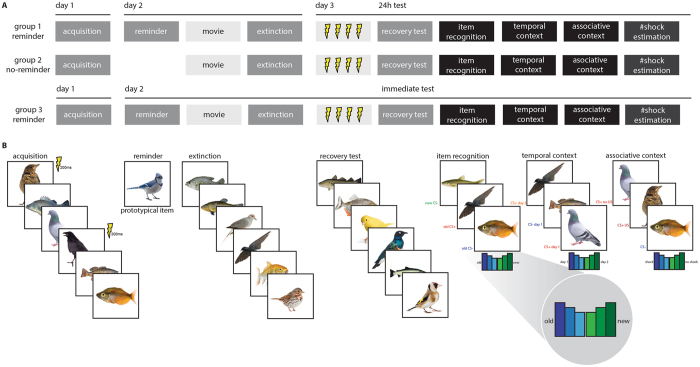Figure 1.
Design experiment. (A) Time line of experiment and (B) task depiction. Over 3 consecutive days participants were differentially conditioned to trial-unique items from a specific category (fish versus birds, counter-balanced across participants) signalling threat (CS+) of transcutaneous electrical shock (US) and unique items signalling safety (CS−) on day 1. On day 2, an isolated reminder was presented to one group (reminder group) but not the other (no-reminder group) by presentation of a novel trial-unique item that was the most prototypical exemplar of the CS+ category. Next, both groups underwent extinction to novel trial-unique items. On day 3, following reinstatement, the recovery of threat-related responses (skin conductance responses, SCR) to novel unique items was assessed. Critically, we tested participants’ recognition memory for the unique items, the items’ temporal context and associative context, and participants’ ability to estimate the number of received shocks. Responses during the memory tests were made on a six point likert scale (inset). In a follow-up control experiment, a group of participants followed the same procedure as the reminder group except that all memory tests were conducted after the reminder-extinction procedure on day 2. Images were obtained from Lifeonwhite.com. This figure is not covered by the CC BY license. © Lifeonwhite.com. All right reserved, used with permission.

